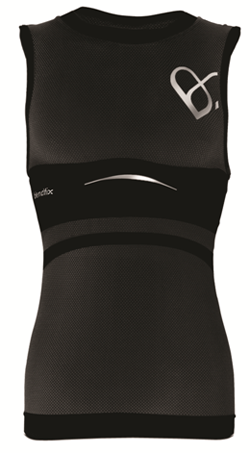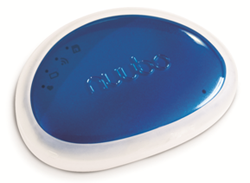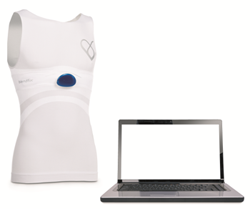1 - Background
Cardiovascular medicine thrives on technical improvements that help medical doctors 1) establish accurate diagnoses and 2) deliver superior patient management. Such improvements are necessary both to 1) obtain benefit in the life of cardiac patients and 2) reduce healthcare costs. Strengthening prevention of cardiac events by means of new technologies may help on all counts (1,2). Wearable electronics, - integration of very small electronic devices into textile fabrics - offer new solutions and capabilities for the diagnosis and management of cardiac patients. Several studies have been published which show the advantages, limitations and clinical scenarios in which they could be used (3,4).
2 - Non-invasive and single-lead dynamic ECG
Our group has had the opportunity to work with a new-generation wireless remote monitoring platform which consists of a non-invasive and single-lead dynamic ECG system that incorporates biomedical e-textile technology (5). It consists of three elements: 1) a biomedical shirt that captures electrocardiographic signal via textile electrodes. Its technology is integrated into the garment enabling non-invasive reception of a medical-quality ECG signal through adherence of textile electrodes to the skin; 2) an electronic device that is attached to the garment and transmits the ECG signal (among other signals such as accelerometer and GPS) via Bluetooth® to a computer which also stores the information in memory cards (microSD cards) (Figure 2); and 3) a software package that manages sessions, activities and users, and allows the visualisation and analysis of data (such as ECG, activity index, relative position of the body, heart rate…) captured by the electronic device (Figure 3). The platform is a medical device certified in the in the EU and already being sold in Europe. Current price for a single holter unit and shirt is 1000 euros and under.
3 - Accuracy of recordings
In order to assess the diagnostic accuracy of the wearable ECG system, we compared the results obtained from this device with the results obtained by means of the conventional treadmill system during an exercise stress test. Thirty-one consecutive patients underwent an exercise test. A summary of main results are shown in table 1. Inter-methods agreement analysis results depicted the good inter-methods agreement between the two techniques for the evaluation of the more common electrocardiographic parameters evaluated in an exercise test. In agreement with these results, previous reports also show very positive results, achieving high accuracy (3,4).
4 - Limitations
The main limitation of this device is the fact that it works from the 0.5Hz frequency to 100Hz frequency. However, for reliable measurement of ST segment variations, it should operate at 0.05Hz frequency, precisely. Therefore, it is not suitable for measuring ST segment variations with diagnostic precision. Nevertheless, new advances in this field, show that in the very near future the devices will provide more diagnostic capabilities and information in various clinical scenarios, while maintaining the same advantages of comfort and non-invasivety.
Conclusion:
Wearable ECG systems provide a new alternative for cardiac remote monitoring, allowing for the capture of ECG signal in a wearable, remote, continuous and non-invasive manner. They can be used simultaneously for both individuals and large numbers of patients, thanks to biomedical e-textile technology that is easy to use by the patient, requires low physician involvement, and with minimal impact on patient lifestyle.
Table 1 : Inter-methods (wearable ECG system vs. conventional treadmill system) agreement analysis.
Kappa index or ICC | |
|---|---|
| Baseline heart rate | 0.97 |
| Peak heart rate | 0.36 |
| Time to reach 85% APMHR | 0.99 |
| 85% APMHR | 1 |
| APC | 1 |
| PVC | 0.83 |
| Adequate ECG 1 | 1 |
95% CI: 95% confidence interval; APC: Atrial Premature Complex; APMHR: Age Predicted Maximum Heart Rate; ICC: Intra-Class Correlation Coefficient.
Figure 1: Biomedical shirt that captures the electrocardiographic signal via the textile electrodes integrated into the garment.

Figure 2: Electronic device that is attached to the garment and transmit the ECG signal to a computer and stores the information in memory cards.

Figure 3: Software package that allows the visualisation and analysis of data.





 Our mission: To reduce the burden of cardiovascular disease.
Our mission: To reduce the burden of cardiovascular disease.